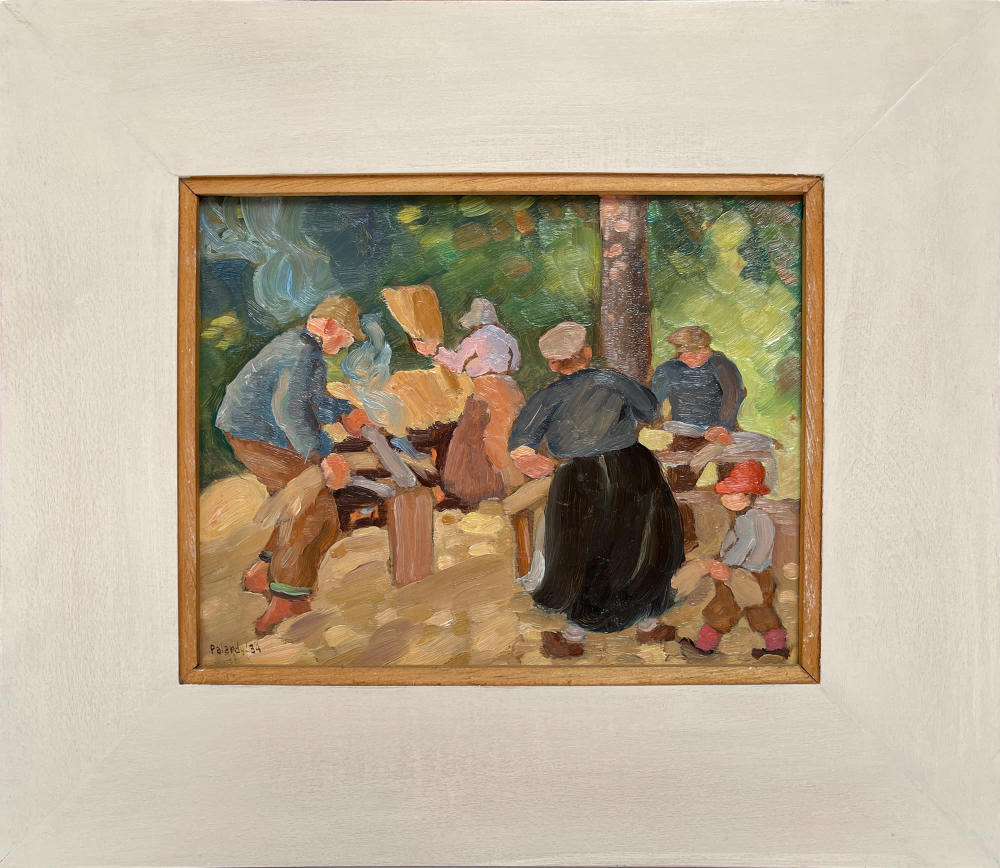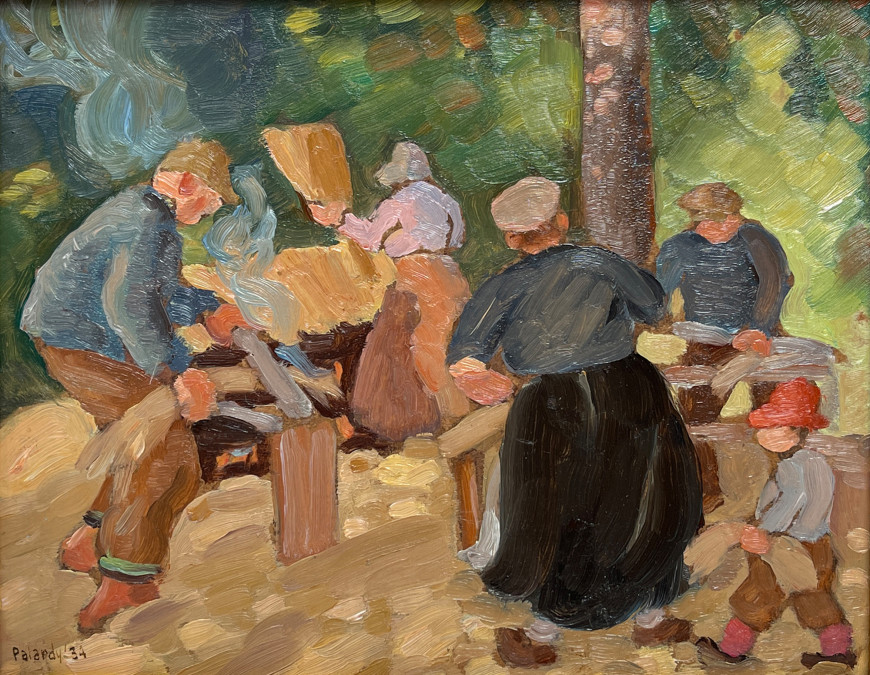-
Artworks
Jean PalardyLe broyage du lin (Crushing the flax), 1934(1905-1991)Oil on cardboard7 1/2 x 9 1/2 in
19.1 x 24.1 cmSoldInscriptions
signed and dated, 'Palardy '34' (lower left)Provenance
Private collection, WestmountA nod to our traditions
The chore of crushing the flax, - pronounced "clutch" - was usually done in October after the harvest. Once stripped of its grains, flax interests the inhabitant for its fiber which goes into making textiles and clothing. This chore consists of preparing the fiber by heating it to rid it of its wood egrets and thus tenderize it. This result is obtained by means of a grinder which is used to grind the stem of the flax to detach the tow from the woody part. Once the process is completed, we obtain a tow that we twist into a cord which, stored in the summer kitchen, will later be peeled, then spun. Flax clutching is done outdoors, sheltered from the wind, often near a stream and on a sunny day. This operation requires a sufficiently complex installation so that the inhabitants of the same rank gather for the chore in order to pool all the flax harvests.
A temporary pit is dug on the ground and a low wall is erected around it in the form of a hearth fitted with a wood grill. The fire thus mounted, it is now a question of heating the flax, gathered in a bundle by dozen "brayes", according to a special technique which consists in drying them. The operation is delicate and requires certain precautions to avoid "scorching" and outbreaks of the entire crop. The determination of the heat of the fire is generally done by an experienced person called the "grill" or the "fireside". The day often ends with a collective meal.











